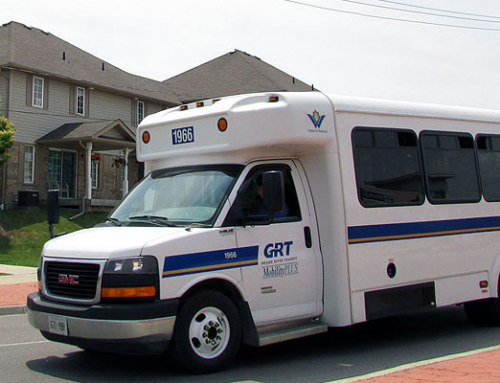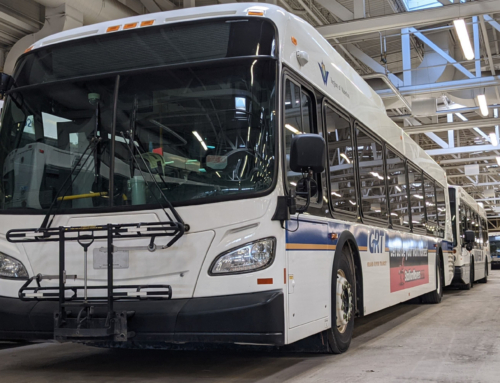Project Description
Introduction
Airport Technologies Inc. (ATI) specializes in manufacturing heavy-duty snow removal equipment for airports. Their fleet of vehicles includes snowplows, de-icers, and runway sweepers. To enhance operational efficiency and reduce downtime, ATI embarked on a project to implement a telemetry system that would provide real-time insights, remote diagnostics, and over-the-air (OTA) software updates.
Challenges Faced by ATI
Preparing Vehicles for Connected Technology – ATI needed to digitize their vehicles by integrating Controller Area Network (CANbus) technology. This involved retrofitting existing equipment with sensors, communication modules, and data interfaces. The transition from analog to digital required careful planning to ensure compatibility and reliability.
Defining Goals and Stakeholder Values – ATI had to clearly articulate their objectives for implementing telemetry. These goals included improving maintenance efficiency, reducing service costs, and enhancing overall vehicle performance. Stakeholder alignment was crucial to ensure everyone understood the project’s purpose and benefits.
Forming a Multidisciplinary Team – As a small engineering team, ATI lacked expertise in certain areas such as software development, data analytics, and connectivity. Audesse, a specialized partner, provided the necessary expertise to build a cross-functional team capable of addressing all aspects of the project.
Thoughout the project, Audesse supported ATI to properly define the project needs to ensure the project would be a success.
Identified Needs
Broad Geographic Support with Limited On-Site Staff – ATI’s snow removal equipment operates across various airports, often in remote locations. Sending a service technician to each site would be costly and time-consuming. The telemetry system needed to provide remote monitoring and diagnostics capabilities to minimize on-site visits.

ATI Vehicle Locations
Challenges in Fault Information Transmission – Operators faced difficulties communicating fault information to service staff, especially when issues were intermittent. ATI needed a system that could capture real-time data and relay it seamlessly to the maintenance team.
Evolving Nature of Electronics and Software – Electronic components evolve rapidly, and software updates are essential to address bugs, improve performance, and adapt to changing requirements. ATI required a flexible solution that could accommodate software changes and handle obsolescence gracefully.
Supporting a Diverse Range of Equipment – ATI’s fleet consisted of controllers and displays from multiple suppliers. These devices needed to communicate effectively with a single telemetry system. Interoperability, customization, and platform agnosticism were critical requirements.

Integration of FlexCase to ATI Vehicle
Objectives
ATI and Audesse set clear objectives for the telemetry system implementation:
OTA Software Updates – Enable remote software updates for all controllers types and displays across the fleet, minimizing operator involvement during updates.
DTC Notifications and Resolution – Receive Diagnostic Trouble Code (DTC) alerts remotely. Diagnose, resolve, and clear trouble codes without physical intervention.
Operational Data Collection – Gather data on vehicle performance, proprietary health metrics, and operational patterns. Use this data to optimize maintenance schedules and reduce downtime.
Implementation and Outcomes
The project spanned 12 months, during which ATI collaborated closely with Audesse to achieve some key outcomes:

ATI Fleet Dashboard
OTA Software Updates – ATI could reliably update software on all controllers and displays remotely. Minimal operator interaction was required, reducing downtime during updates.
DTC Resolution – DTCs were read, diagnosed, and resolved remotely using FlexConnect. Troubleshooting became more efficient, leading to quicker issue resolution.
Operational Data Collection – ATI gained insights into vehicle performance, usage patterns, and health metrics. Predictive maintenance strategies were implemented, further reducing downtime.
Conclusion
ATI now enjoys the ability to remotely support their vehicles in the field more quickly and easily. The telemetry system has transformed their maintenance processes, ensuring optimal performance, cost savings, and improved customer satisfaction. With the solution presented here, ATI is well-equipped to handle the evolving demands of heavy-duty airport snow removal equipment.
In summary, ATI’s successful implementation of the telemetry system demonstrates the power of connected technology in enhancing operational efficiency and reducing maintenance costs. To learn more about how Audesse can help your organization, contact our sales team.




